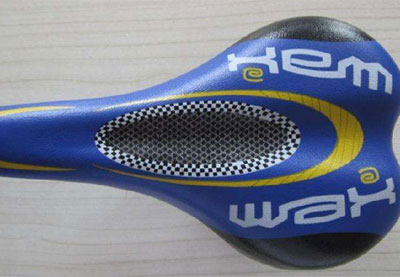
- Afrikaans
- Albanian
- Amharic
- Arabic
- Armenian
- Azerbaijani
- Basque
- Belarusian
- Bengali
- Bosnian
- Bulgarian
- Catalan
- Cebuano
- Corsican
- Croatian
- Czech
- Danish
- Dutch
- English
- Esperanto
- Estonian
- Finnish
- French
- Frisian
- Galician
- Georgian
- German
- Greek
- Gujarati
- Haitian Creole
- hausa
- hawaiian
- Hebrew
- Hindi
- Miao
- Hungarian
- Icelandic
- igbo
- Indonesian
- irish
- Italian
- Japanese
- Javanese
- Kannada
- kazakh
- Khmer
- Rwandese
- Korean
- Kurdish
- Kyrgyz
- Lao
- Latin
- Latvian
- Lithuanian
- Luxembourgish
- Macedonian
- Malgashi
- Malay
- Malayalam
- Maltese
- Maori
- Marathi
- Mongolian
- Myanmar
- Nepali
- Norwegian
- Norwegian
- Occitan
- Pashto
- Persian
- Polish
- Portuguese
- Punjabi
- Romanian
- Russian
- Samoan
- Scottish Gaelic
- Serbian
- Sesotho
- Shona
- Sindhi
- Sinhala
- Slovak
- Slovenian
- Somali
- Spanish
- Sundanese
- Swahili
- Swedish
- Tagalog
- Tajik
- Tamil
- Tatar
- Telugu
- Thai
- Turkish
- Turkmen
- Ukrainian
- Urdu
- Uighur
- Uzbek
- Vietnamese
- Welsh
- Bantu
- Yiddish
- Yoruba
- Zulu
Aug . 06, 2024 10:56 Back to list
How to Properly Adjust SRAM Rear Derailleur on Your Mountain Bike for Optimal Performance
Adjusting the SRAM Rear Derailleur on a Mountain Bike
When it comes to mountain biking, precision in shifting can make all the difference in your ride quality and overall performance. A properly adjusted SRAM rear derailleur is crucial for achieving smooth gear transitions and maintaining optimum gear ratios on varying terrains. Whether you’re tackling steep climbs or navigating technical descents, ensuring that your derailleur is correctly set up can enhance your biking experience.
Understanding the SRAM Rear Derailleur
Before diving into adjustments, it's important to understand the key components of the SRAM rear derailleur. This system includes the derailleur body, the jockey wheels, the tension spring, and the limit screws. The derailleur mechanism guides the chain across the cassette sprockets, enabling you to shift gears smoothly. SRAM's design is known for its efficiency, but even the best systems require occasional fine-tuning.
Tools You’ll Need
To adjust the SRAM rear derailleur, you'll need a few basic tools - A Phillips screwdriver or a flathead screwdriver (depending on your derailleur model) - A 5mm Allen wrench - A chain checker (optional, for chain wear) - A bike stand (optional, but helpful for stability)
Step-by-Step Adjustment Process
1. Check the Gear Shifting Begin by taking your bike for a short ride. Shift through all the gears to assess how smoothly the derailleur operates. Take note of any skipping, sticking, or chain noise, as these symptoms indicate an alignment issue.
adjust sram rear derailleur mountain bike

2. Limit Screw Adjustment The two limit screws on the derailleur (marked as 'H' for high gear and 'L' for low gear) are critical for preventing the chain from falling off the cassette. - High Limit (H) This screw limits how far the derailleur can move inwards. Shift to the smallest rear cog and check that the chain doesn’t overshoot. If it does, tighten the 'H' screw until the derailleur aligns correctly with the smallest cog. - Low Limit (L) Shift to the largest rear cog and ensure the derailleur doesn’t push the chain into the frame. If it does, tighten the 'L' screw to correct its position.
3. B-Screw Adjustment The 'B-screw' controls the distance between the derailleur’s jockey wheel and the cassette. A proper gap is essential for smooth shifting. Turn the screw to either increase or decrease the distance based on your cassette size, typically aiming for 5-7mm of clearance.
4. Cable Tension The rear derailleur relies on cable tension for precise shifting. If you find that shifts are sluggish or imprecise, increase the tension. You can do this by turning the barrel adjuster (located on the shifter or derailleur) to the right until you achieve smooth indexing.
5. Final Check After making your adjustments, take another test ride. Shift through all the gears again, ensuring each transition is crisp and without delay or skipping. If you encounter persistent issues, you may need to revisit the cable tension or re-check your limit settings.
Maintenance Tips
Regular maintenance of your SRAM rear derailleur is essential for long-term performance. Always keep your components clean and lubricated, and do not neglect to inspect your chain for wear. A well-maintained drivetrain will not only improve your shifting performance but will also prolong the lifespan of your components.
Conclusion
Adjusting the SRAM rear derailleur on your mountain bike can seem daunting, but with the right tools and a little patience, you can achieve smooth and efficient shifting. By understanding the mechanics involved and regularly maintaining your bike, you can enhance your riding experience, tackle challenging trails with confidence, and enjoy every moment out on the trail. Happy riding!
-
The Ultimate Kids' Four-Wheeler Experience
NewsJul.09,2025
-
The Ultimate Guide to Mountain Bikes: Gear Up for Your Ride
NewsJul.09,2025
-
The New Age of Cycling: Electric Bikes for Every Rider
NewsJul.09,2025
-
The Best Kids Bicycles: Ride in Style and Safety
NewsJul.09,2025
-
The Best 3-Wheel Scooters for Kids: Fun, Safety, and Adventure
NewsJul.09,2025
-
Revolutionize Your Ride: Affordable Electric Bikes
NewsJul.09,2025
-
Finding the Perfect Mountain Bike for Every Rider
NewsJul.09,2025



